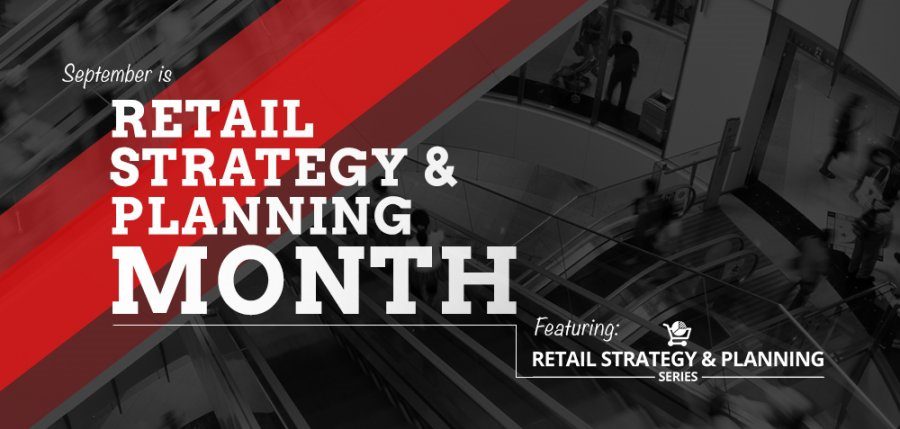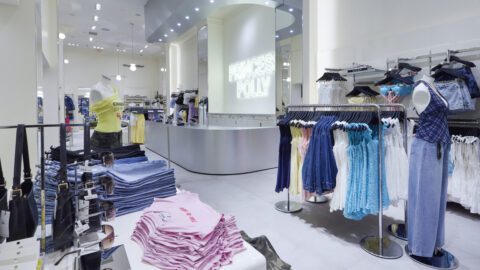From creating an “advocate army” to maximizing the benefits of location information, retailers are finding new ways to optimize both internal and external data. Close to 1,000 retail executives joined the #RSP16 Retail Strategy and Planning webinar series last week to tap into the latest tools and trends. Key takeaways included:
-
Cart Abandonment messaging is now the most profitable email strategy;
-
Even though they account for less than 19% of web traffic, “bad” bots are responsible for the majority of web site problems;
-
On average, 50% of a database has opted out or is unreachable; and
-
As many as 40% of merchants not sharing their POS or inventory data with any of their suppliers.
To learn more, read the recaps below and view all sessions on demand: Retail Strategy and Planning Series #RSP16.
Three Must-Have Messages For A Successful Lifecycle Email Strategy
The constant changes in consumer behavior mean retailers must always stay on top of shopper desires to provide them with the experience they want. This maxim definitely applies to email marketing.
In the #RSP16 session titled: Adapting Lifecycle Messages To Target Changing Consumer Behavior, Greg Zakowicz, Senior Commerce Marketing Analyst at Bronto Software, revealed three types of messages that can optimize an email lifecycle marketing strategy:
• Welcome series;
• Cart abandonment; and
• Birthday messages.
From a relationship standpoint, a welcome series is designed to be a virtual handshake, or a first impression that establishes trust and consumer confidence to drive revenue. A typical welcome message provides benefits and a call-to-action to shop, but should also be memorable and strike emotion.
“This should be the most read message you ever send in your email program,” said Zakowicz. “It’s the point where people say ‘yes, send me some emails.’ If there is incentive in there, they’re going to be looking for that incentive.”
Cart Abandonment Emails Create Profit Opportunities
However, Zakowicz noted that the most profitable emails sent are cart abandonment messages. The three ways brands can differentiate with these is through cart total, incentives and number of messages included in the campaign.
The third set of emails, birthday messages, are relevant to the consumer because they are most specific to the individual the message is targeted to. Three tips to sending successful birthday messages include:
• Analyze product offerings for pre-birthday opportunities;
• Target the consumer’s social circle; and
• Guide the subscriber and don’t rely on one message.
Zakowicz added that implementing these strategies is critical to matching the continued consumer behavior shift, especially as shoppers browse and shop from anywhere on any device. Retailers have an average of six channels throughout the customer service experience, so it’s imperative for them to ensure that each experience is consistent.
“From a retailer’s perspective, they still have these silos, regardless of whether it’s customer service or marketing, and the goal is to break these silos down,” said Zakowicz. “Retailers know this, and they are working on it, but they still have this siloed approach. The problem there is that consumers do not have that approach. All they know is that they’re interacting with the brand.”
Taking Omnichannel To The Next Level With Unified Commerce
Omnichannel has been a buzzword in retail for quite some time, but it could be overtaken by a new term: unified commerce, which focuses on a customer-experience-first strategy.
In the #RSP16 webinar session titled: Using Omnichannel Commerce Data As A Competitive Differentiator, Daniel Edwards, National Sales Leader at Tribridge, provided a business case for unified commerce, and explained why having a multi-channel sales approach helps deliver a universal message across all channels to provide customers with a holistic shopping experience.
Benefits Of Unified Commerce
According to Boston Retail Partners, 85% of all retailers indicated that unified commerce is a top priority. Through unified commerce, retailers can:
-
Provide sales associates with endless aisle solutions;
-
Open the doors to higher levels of personalization;
-
Identify their most loyal, high-value customers; and
-
Provide customers with relevant, educational content immediately post-sale.
“When people think of omnichannel, they think of only one piece of that omnichannel strategy,” said Edwards. “So a lot of times you see retailers, wholesalers and product brand experts focus their omnichannel strategies on their web site, in store experience, call center, mobile accessibility and affiliate channels, etc. But these strategies only represent half the store. Omnichannel is more than a shopping experience; we want to look to deliver a unified commerce experience to our customers.
“In order to provide the full-service experience that your customers are expecting, the other pieces you should look at are below the iceberg,” he added, citing:
-
Inventory and warehouse management;
-
Merchandise planning and purchasing;
-
Order fulfillment and delivery management;
-
Customer service and support; and
-
Additional channels such as Amazon, eBay and affiliates.
The most efficient way of tackling unified commerce is having unified systems, according to Edwards. For example, make sure that your customers have the ability to purchase online and in-store, and that if an item is out of stock in-store, the sales associate can to redirect shoppers to a different store or give them the option to buy online in real time.
“What ties this all together is having a back office system that also gives real-time inventory availability and provides that customer service so you can have a 360-degree view of customers,” said Edwards. “A single database is the ideal solution because all the pieces of an omnichannel solution are on that single system.”
‘Bad Bots’ Threat On The Rise
In its strictest definition, a bot is any automated computer program that runs on the Internet. Whether that bot is used for good or nefarious reasons depends on the end user. Even though they account for less than 19% of web traffic, “bad” bots are responsible for the majority of web site problems. And, in a very scary Terminator-like way, their capabilities to evade defenses are growing daily.
In this #RSP16 webinar session, titled: Are Bot Operators Eating Your Lunch?, Rami Essaid, CEO and Co-Founder of Distil Networks and Brian Gross, Director of IT Governance for Hayneedle, Inc. explained the dangers of these automated attacks and how retailers can protect themselves.
With bad bots, competitors can index a retailer’s entire site in a very short timeframe and understand its pricing, inventory levels, and marketing and SEO strategies. They also can attract and pull away users and undercut any site by slight dollar amounts, resulting in:
• Decreased customer loyalty;
• Lost cross-sell and upsell opportunities;
• Decreased customer satisfaction; and
• Increased fraud.
“The most interesting thing about bots these days are that they are no longer dumb, simple scripts,” Essaid explained. “In fact, 88% of bots attacking web sites are dubbed ‘Advanced Persistent Bots’. These APBs can mimic human behavior, execute JavaScript, hold on to cookies and navigate elements on a page. They are persistent in the sense that they randomize their IP and masquerade the true nature of who they are. The majority of these bots are trying to evade your defenses, which makes then very difficult to stop with traditional measures.”
Playing A Losing Game Of ‘Whack-A-Mole’
In fact, during the last 12 to 36 months, bots have increased their use of multiple IP addresses: “We are now seeing 73% of bots in any single attack leverage more than one IP address, and 20% of those are using hundreds of IP addresses, sometimes thousands,” Essaid explained. “The traditional game of blocking people by IP has turned into a game of IP ‘whack-a-mole’ that infrastructure guys are not able to keep up with.”
In one example, QVC suffered an automated attack that sparked a two-day outage. This resulted in $2 million in losses, damage to its brand and a number of lawsuits filed against the company.
In Hayneedle’s case, Gross detailed the severity of the attacks suffered and how the company’s decision to partner with Distil can serve as a call to action for all businesses looking to defeat bad bots. Retailers must be able to:
• Identify human automated traffic vs. human-like traffic;
• Review threats by organization;
• Understand the rationale of scrapers; and
• Selectively block nefarious organizations.
“Not all traffic coming from data centers is bad,” Gross noted. “Take your time and understand what those different pieces of traffic look like and how your real users act. With Distil, we were able to reduce competitive data mining, intercept bot traffic and free up time to serve real humans out there. It absolutely boosted our team morale.”
How To Target Existing And New Customers With CRM Data
Paid search spend will grow to nearly $80 billion in 2020, according to Borrell Associates. Additionally, $23 billion is now being spent on paid advertising on social networks, with Google and Facebook dominating. But retailers seeking to capture new customers and retain existing ones can accomplish many of these goals with data they already have.
During the #RSP16 session titled: How To Leverage Your Own Data To Amplify Your Brand, Sean Brady, President of the Americas for Emarsys, highlighted the power of first-party CRM data for retailers. “So much attention is put on the data that we don’t have that I want to challenge everyone to stop and think about the data you do have,” said Brady.
Simple, first-party data, such as a customer’s contact information, is extremely valuable, according to Brady. This information allows the retailer to understand an individual and to use CRM ads to drive repeat customers and target people who “look” like those customers.
For example, if customer A buys something on an e-Commerce web site, the customer’s email and shipping information is now the retailer’s first-party data. With that data, Facebook and Google can use their custom audience and email match tools to display targeted ads to that customer. In addition, Facebook and Google can also find people with similar people that look like customer A, and target the ads to them as well.
Leveraging Data To Target Lookalike Consumers
“You’re not just buying a display ad on Facebook or Google, you’re investing in an ad targeted directly to a person you know is a customer,” said Brady. “CRM ads not only allow you to target existing customers, but also allow you to target lookalikes. That’s the amplification: you’re taking your first-party CRM data about [customer A], and you’re amplifying that message out into the web.”
CRM data can also be used to drive higher retention. Using first-party data, retailers can target customers who haven’t been back to the web site for months online.
Brady highlighted a few other ways to use CRM data, including knowing which customers not to target. “You know what the person looks like, so you can create a cohort of people who are not ideal clients,” he said. Marketers can also use this data to reach the unreachable: “On average, 50% of a database has opted out or is unreachable,” said Brady. “Now you have a channel beyond email.”
Leverage Location To Enhance Retail Data Strategies
Smartphones, beacons and geofencing have made location-based data top-of-mind in recent years, but retailers have only begun to scratch the surface when it comes to leveraging location data.
“Without location data, you really don’t have the ability to have a 360-degree view of the enterprise,” said Gary Sankary, Retail Industry Manager at Esri. “If you don’t know where transactions are happening, or you don’t know where your customers are and where your products are, you don’t have the ability to be as relevant as you could be.”
During the #RSP16 webinar titled: Four Ways To Improve Business Results With Location Data, Sankary explained why location data needs to be an integral part of any retailer’s master data management strategy. He identified key uses for location data, including:
• Enhancing data-driven decision-making: In addition to using location attributes to build trade areas based on population data, “retailers can also find out who is NOT shopping in their stores, and see where there are ‘holes’ in a shopping pattern,” said Sankary. “Then they can find out if it’s a competitive issue, a population issue, or if they are simply not carrying the products that this group wants.”
• Driving customer engagement via personalization and segmentation: Proximity marketing and the ability to help shoppers navigate their way through a store requires location data. Both can lead to incremental sales if a retailer can encourage a shopper to try a private label brand or purchase a larger package size.
• Creating value-added experiences for customers: Home delivery and personalized fulfillment offerings are prized by shoppers, but they can get “complicated and expensive in a hurry” without a solid location data strategy, said Sankary.
• Maximizing investment in brick-and-mortar stores: As more retailers are faced with closing stores, location data can determine which locations to turn into “dark” stores (i.e. transforming part of the store into a fulfillment center or DC), or which to shut down altogether. “Retailers want to know how to close stores most efficiently with the least impact to their overall sales numbers,” said Sankary, who noted that simply closing the lowest-performing store in a market is not always the right decision.
While SMB retailers may believe using location-based data is only for large enterprises, Sankary disagrees: “Everyone benefits from analytics, and while a small retailer might not have a full staff of PhDs, they do have buyers and merchandisers responsible for individual stores’ performance. With location data we can ‘drop a pin’ at a store and tell you who is around that store, and then find other stores with similar populations. All this provides insights to the merchandising organization, and the more information they can gather about individual stores, the better decisions they will make.”
Data Sharing Is Critical To Improving The Customer Experience
As retailers continue to gather more customer information, they are working to find new ways to consolidate, analyze and share that data.
Data sharing is an underutilized opportunity for retailers, with as many as 40% of merchants not sharing their POS or inventory data with any of their suppliers, according to the 2015 Retailer/Supplier Shared Data Survey. Of the remaining 60%:
-
20% share the data with less than 10 suppliers;
-
35% share the data with between 10 and 50 suppliers; and
-
Only 5% share with all their suppliers.
In the #RSP16 webinar titled: How Retailers Can Harness Distributed Analytics To Drive Revenue, CX And Supply Chain Excellence, Blaine Mathieu, Chief Marketing and Product Officer at GoodData, unveiled three recommendations for retailers seeking to improve their customer experiences and drive revenue:
-
Uncover as many types of data as possible, from consumers, demographics, purchasing patterns or preferences;
-
Onboard systems that can deliver data to both analysts and business decision-makers, such as retail managers and store operators; and
-
Embed analytics into workflows to accelerate operations.
Enhance Workflows With Actionable Insights
“There are so many decisions that need to be made throughout the course of a retail supply chain, from just-in-time restocking to returns processing,” Mathieu said. “You have an opportunity to accelerate and automate many of those processes with analytics, enhancing workflows with insights that recommend specific actions to take and automatically initiate those workflows.”
Mathieu highlighted additional examples as to how retailers can take better advantage of their data, such as distributing personalized analytics to individual store managers to benchmark their stores’ performance against other stores, or creating an incentive program for managers to increase average sales per store.
“What it boils down to is, if the data is properly harvested, packaged and distributed to the right people — distribution is key — data could be better used to understand your customer preferences, improve the in-store and online experience, streamline the supply chain and drive revenues,” Mathieu noted.
How To Build An Advocate Army
What is Backcountry.com doing that you’re probably not doing? Motivating brand advocates to help boost sales — every day. Backcountry is engaging with loyal shoppers who become Advocates, then Influencers, and finally the most valuable Super Advocates, who drive the greatest number of conversions, according to Jen Gray, Director of Marketing at Extole.
Gray shared insights into how to build strong Advocate armies, featuring Backcountry.com as a prime example in the #RSP16 webinar titled: Build An Advocate Army, Drive More Revenue In 2017 And Beyond.
To illustrate the value of Advocates, Gray shared an example of a shopper named Mikaela who delivered four email shares and one Facebook share for a total reach to 707 consumers. She drove three new conversions, driving $240.10 in revenue for the retailer. Mikaela could be considered a Super Advocate for the brand.
Backcountry Nails Retail Referral
Backcountry.com has embraced referral marketing with impressive results. Active Advocates for the brand deliver 42 conversions per 100 Advocates, compared with an industry benchmark of 25, according to Gray. Since the launch of its Referral Marketing program in August 2015, close to 34,000 consumers have shared Backcountry with their friends, colleagues and peers.
The retailer covers all bases when promoting to Advocates. Throughout its web site and marketing messaging, Backcountry.com gives customers the opportunity to reward friends who shop at the site. The compelling statement, “Give Your Friends $10” appears in a variety of places and pages. Current customers, or Advocates, are encouraged to share this message via emails and social channels, including Facebook and Twitter.
Backcountry.com also is attentive to its Advocates, sending a thank-you message following a share. When the recipient is ready to complete a purchase, the $10 discount automatically appears on the checkout page.
Backcountry.com hones its Advocate messaging by performing A/B tests with a variety of wording and image placements. Surprisingly or not, the call-to-action “Activate Your Coupon” received a better response compared to “Shop Backcountry.com.”
Always More Work To Do
While Backcountry.com offers a stellar example of a retailer dedicated to Referral Marketing, there’s always room for improvement. For example, Backcountry is recording 0.3 shares per converting friend vs. the industry benchmark of 0.33. The retailer is working on new tactics to boost the number of shares, which will increase conversions.
In addition to traditional retail programs, Gray shared successful referral marketing examples from other segments, including Consumer Services, Subscription Retail, Financial/Account Opening, and Lead Generation. In each type of segment, successful referrals differ; recipients may be more motivated by a free subscription or monthly discount vs. a dollars-off coupon.
View all sessions on-demand: Retail Strategy and Planning Series #RSP16.













